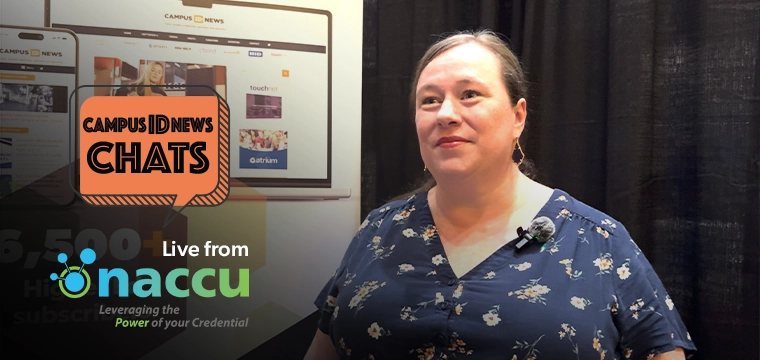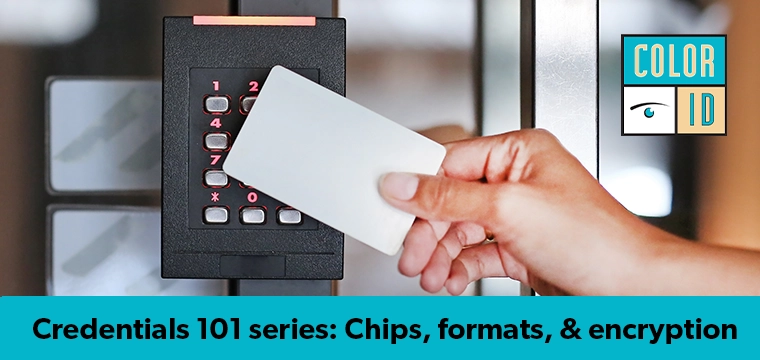 By Chris Corum, Executive Editor, AVISIAN Publications
By Chris Corum, Executive Editor, AVISIAN Publications
A newly-issued patent covering the movement of funds between accounts via the web is hitting close to home with campus card systems. No surprise as the patent was originally conceived to cover these transfers from a bank account to a campus card account.
In November 2005, United States Patent 6,963,857 was issued to JSA Technologies, a familiar name in campus card circles. JSA has been supplying value transfer solutions to colleges and universities since the late 90s. The technology enables web-revalue of campus card declining balance and other accounts.
“We had a working product late 1998,” says Jon Gear, Vice President of JSA, “and the patent was filed in 1999.“ More than six years elapsed between initial application and final approval, a timeframe that is not uncommon in the patent application process.
“It covers the transfer of funds between networks via the Internet,” says Mr. Gear. He stresses that the patent in no way impacts typical bank to bank transactions as these utilize a common financial processing network. It is when transfers occur from this traditional financial processing network into another network that the patent’s coverage seems to begin.
The opening salvo
In recent weeks, letters were sent from JSA to a number of companies and institutions that have developed systems that, according to Mr. Gear, may infringe on the patent. He adds, “we have not told any institution or organization that they are infringing. All we have done to date is (begin) to notify the market that we have this patent.”
Though the actual number of letters was not provided, it was suggested that there was between 10 and 20 parties notified. Campuses using systems supplied by vendors were not contacted, as the vendor would be the point of contact in these instances. “Schools only received the letter if they had a homegrown system,” said Mr. Gear.
What was the purpose of the letter? The intent can be found in the first line of the press release issued March 16, 2006, “Recently JSA Technologies contacted numerous private companies and several institutions of higher education regarding the licensing of a patent invented and commercialized by our company.“
JSA is seeking to license its patented technology. “We don’t want to shut anybody down,” says Mr. Gear, “if you are happy with what you are doing, we don’t want to stop you from doing it. We will just talk about licensing.“
When asked about the fees sought, Mr. Gear told CR80News that they were not yet determined. “It is premature to know what kind of fees would be expected and they will likely be determined on a case-by-case basis. The license fee will probably be negligible in the grand scheme of things.”
According to a company press release issued March 16, 2006, campuses with homegrown systems were contacted because, “we want to grant them licenses to our patent so they may continue their operations.” When asked by CR80News if campuses with in-house solutions developed for their own use prior to the issuance of the patent will be charged license fees, JSA officials stated that they would need a license if they developed the system after 1998 when the patent was filed.
That JSA is seeking license fees should come as no surprise nor should it be met with scorn. The fabric of an entrepreneurial and capitalist society requires protection of intellectual property. The patent is a hard-earned acknowledgement and legal proclamation of intellectual property. And patents are also not cheap. According to the release, JSA has “spent considerable time and resources developing and commercializing its patented software.”
Implications beyond campus cards
Reading the text of the patent, it seems likely that the reach may extend well beyond campus cards. Other financial systems that operate outside of the traditional banking network, but rely on it for revaluing or replenishment, may well be impacted.
Would gift cards architectures that operate within standalone or closed loop networks yet enable web-based value transfers from bank or card accounts be viewed as infringing? What about peer-to-peer payment networks like Paypal that rely on value transfers from bank accounts to fund their online payment service?
Mr. Gear said it was not something he was prepared to comment on suggesting only that, “we would have to have discussions to determine the extent to which these things may apply.”
Dissecting the patent into layman’s terms
We have done our best to translate the morass of ‘patent-speak’ into language that the average non-attorney can understand. The following translation is for the abstract of the JSA patent.
Actual language: The present invention is directed to methods of, and systems for, allowing an account participant to add value via a wide-area network to a first account from a second account. A first account server coupled to a wide-area network supports the first account. In a preferred embodiment the wide-area-network-accessible value transfer station (VTS) includes a central processing unit for executing instructions, and a memory unit. The memory unit includes an operating system, software for receiving from a participant via the network a) second account identification information, and b) a value that the participant desires to transfer to the first account from the second account, second account verification software for receiving the second account identification number from said receiving software and for verifying that the second account authorizes the transfer of the specified value, and value transfer software for receiving a value from the receiving software, for receiving a verification from the verification software, and for transferring the specified value to the first account from the second account if the verification is received. The wide-area-network-accessible VTS further includes conductive interconnects connecting the central processing unit and the memory unit to allow portions of the wide-area-network-accessible value transfer station to communicate and to allow the central processing unit to execute the software in the memory unit.
Translation: The patent is for a system that enables an account holder to transfer funds (or value) from one account to another account via the Internet (or wide area network). The first account operates on a specific network. A value transfer station (VTS) is a computer or similar device with connectivity to that network. The VTS runs software to accept (for the account holder) a second account number and a dollar (or value) amount to be transferred into the first account. The software also (1) verifies that the second account authorizes the transfer (e.g. that sufficient funds or credit are available), (2) receives the electronic transfer of the funds, and (3) adds that value into the second account. The VTS’ CPU and memory are connected such that the CPU can execute the software contained in the memory.
Text of the press release issued by JSA on March 16, 2006:
Recently JSA Technologies contacted numerous private companies and several institutions of higher education regarding the licensing of a patent invented and commercialized by our company. Since that time there has been much debate about the implications of the patent. It is my hope that this communication will address these issues and clarify our intentions regarding the enforcement of the patent.
JSA has been in business since 1998 and has spent considerable time and resources developing and commercializing its patented software. The patent was obtained to protect the business and intellectual property rights of JSA Technologies. Without the patent, companies with greater capital resources could use our invention for their financial gain and attempt to drive JSA Technologies out of business. That is why we sent communications to college and universities who have developed solutions that may infringe upon the patent. We want to grant them licenses to our patent so they may continue their operations.
JSA Technologies was founded on the principal that colleges and universities should be given the opportunity to choose their own path. No one company should be able to dictate what solution is used to satisfy a business objective. We spoke with many institutions frustrated with the limited offerings from their card system provider and developed our unique WebVTS™, StudentLink™ and MerchantLink™ products to address their needs.
We champion the concept of unique solutions and custom designs. That is why it is so important that everyone know our intentions regarding the patent. If JSA cannot meet the business requirements of a given college or university, we do not want to prohibit the institution from finding a solution that does. If, however, the solution uses our patented technology, we will request an appropriate licensing agreement.
We want you to choose JSA Technologies based on the quality of our product and not because we have a patent.
I encourage you to contact JSA if you have any questions or concerns about our patent.
David Johnson
President/CEO
JSA Technologies
(877) 572-8324 x2200
[email protected]
Additional resources:
To visit JSA online, click here.
To read the full text of the patent online, click here.




